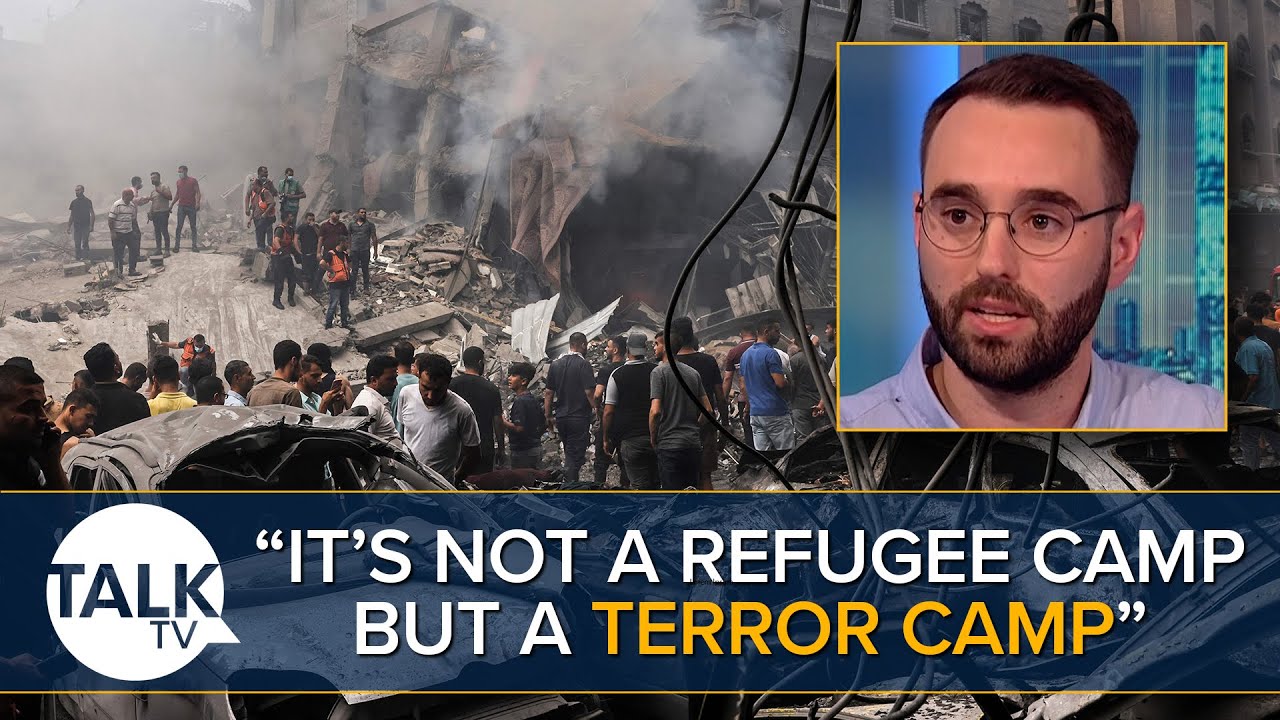Ex Idf Officer Says Hamas Was Behind Attack On Bombed Gaza Refugee Camp
Unleash Your Creative Genius with MuseMind: Your AI-Powered Content Creation Copilot. Try now! 🚀
The situation in the Gaza Strip has been making headlines worldwide, with Brits among the first civilians to leave the area. Over 400 people, including foreign nationals and injured Palestinians, were allowed through the border crossing into Egypt. However, thousands of others were left waiting at the border. This comes after Israel's bombing of the Jabia refugee camp, which resulted in the deaths of at least 50 people.
The bombings have been condemned by several states, with the UN even suggesting that they could amount to a war crime. To shed some light on the situation, we have with us a former IDF Soldier and founder of the organization "Israel is Israel," Elel Bam.
A Reframe of Perspective: From Refugee Camp to Terror Camp
When discussing the bombing of the refugee camp, Bam takes a different approach. He suggests that instead of referring to it as a refugee camp, it should be called a "terror camp." According to Bam, the IDF had called for every civilian to evacuate the area for over two weeks, and most of them did. He argues that Hamas, the target of the operation, did not get permission for many civilians to leave and even stopped people on the way. This, according to Bam, is the main war crime committed by Hamas. Additionally, he accuses Hamas of kidnapping children, babies, and women.
Bam believes that if Hamas were to release the hostages and stop their terror attacks, the situation could be resolved quickly. However, he highlights that Hamas has shown no remorse and has even expressed a desire to continue its attacks.
Calculating the Collateral Damage: A Delicate Balance
One of the key questions raised is how Israel calculates the potential collateral damage when targeting areas like the camp. Bam explains that the IDF's goal is to target Hamas terrorists while minimizing civilian casualties. He emphasizes that the IDF routinely calculates the number of civilians in any area that could be affected by an airstrike. They also consider who the targets are on the other side.
Bam provides an example of the attack on the Jabalia terror center, which was mostly an underground tunnel center. The commander, who was hiding behind the building with civilians, was part of the planners and executors of a previous massacre. This illustrates the importance of understanding who the targets are while minimizing collateral damage.
The Road to Resolution: A Complex Path Ahead
The conflict between Israel and Hamas has already resulted in the loss of many lives, including young children. Homes have been destroyed, and the might of Israel is undeniable. However, Bam believes that there is a way to bring an end to the conflict. He acknowledges the calls for a ceasefire but also recognizes the plight of civilians on both sides.
Bam hopes for a peaceful resolution but acknowledges the challenges posed by Hamas, who still holds over 230 Israelis in captivity and continues to launch rockets at Israeli cities. He acknowledges that resolving the conflict will take time, potentially weeks or even months. The complexity of the situation is further heightened by the potential involvement of Iran and its proxies in the region.
Bam warns of the wider implications and threats posed by Iran's proxies, such as the

Related Recaps
- President Yoon Asked Point Blank About US Spying On South Korea At Press Conference With Biden
- What is Wrong with Realme?
- CHỈNH ỐC RS3M - ĐƠN GIẢN & HIỆU QUẢ
- Anger at painful legacy of Japanese colonisation runs deep in South Korea • FRANCE 24 English
- Đông Paulo || Cận Cảnh Tất Cả Các Thành Quả Nông Nghiệp Của Nông Trại Sau Một Buổi Đi Vòng Quanh